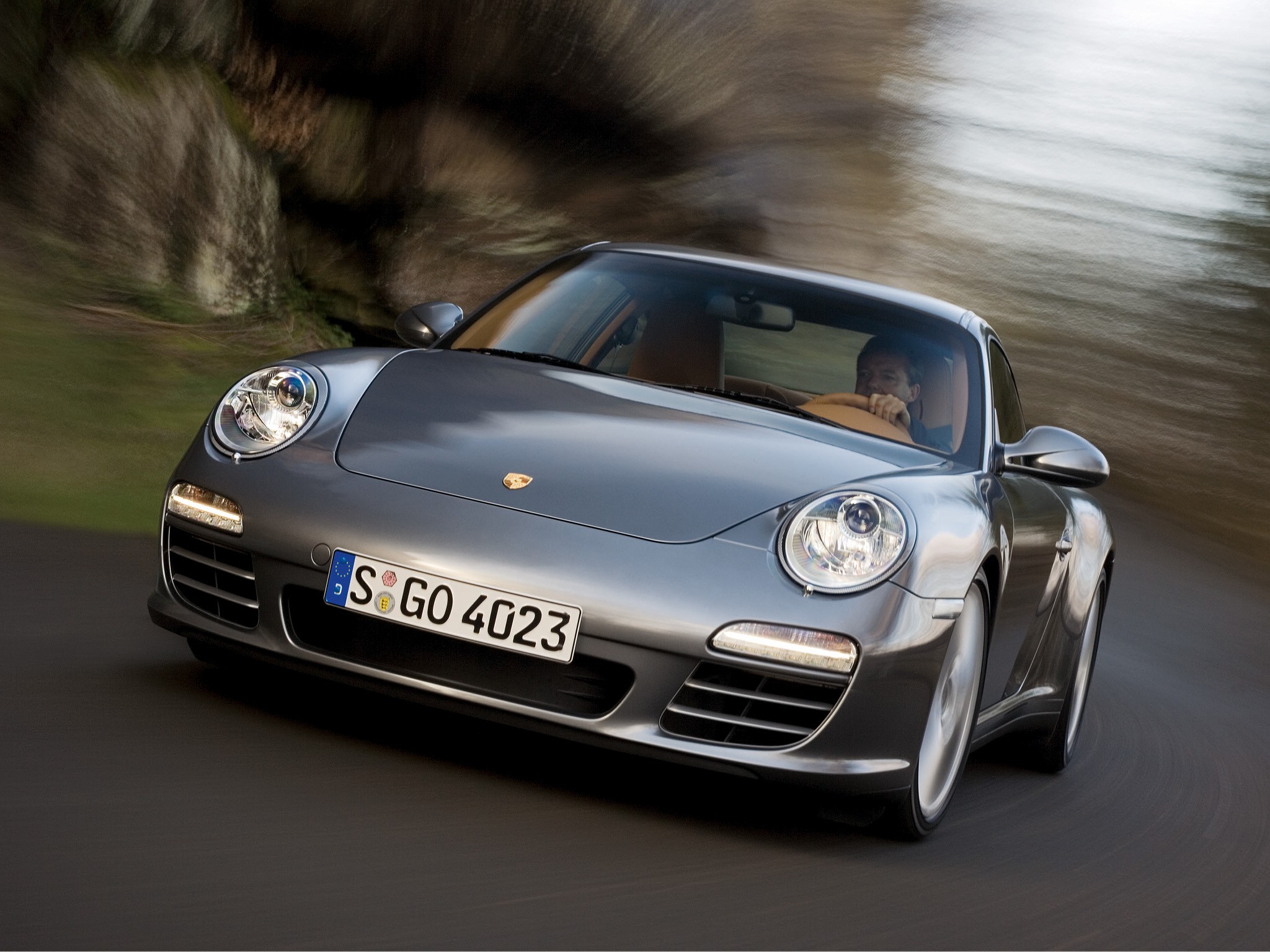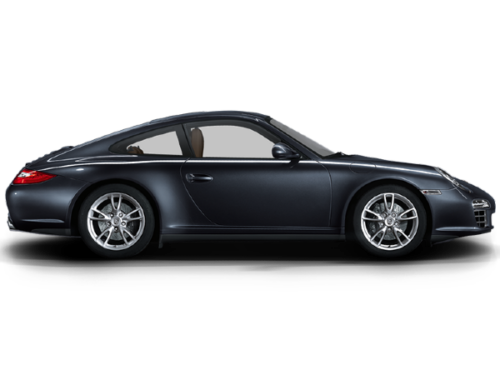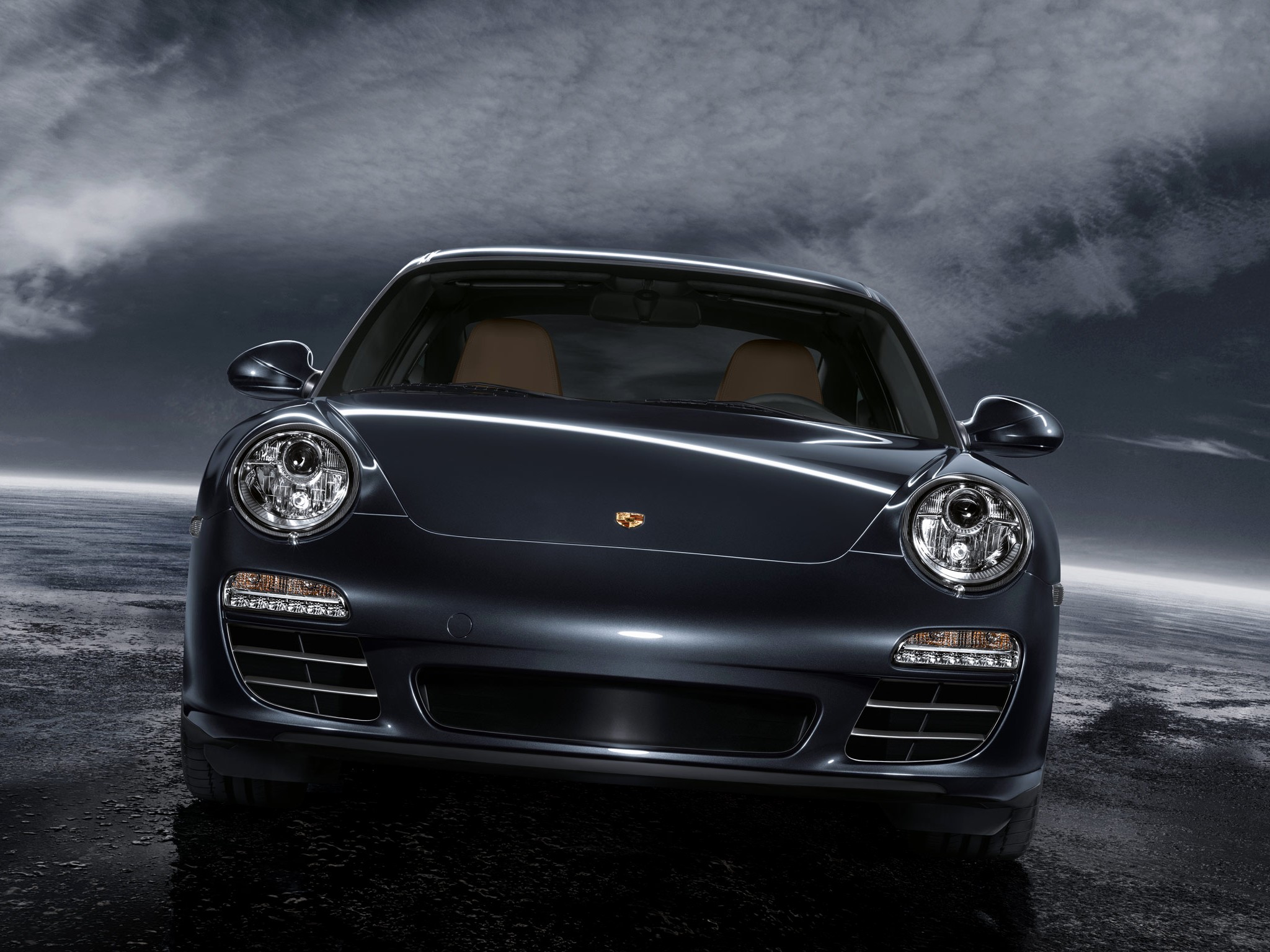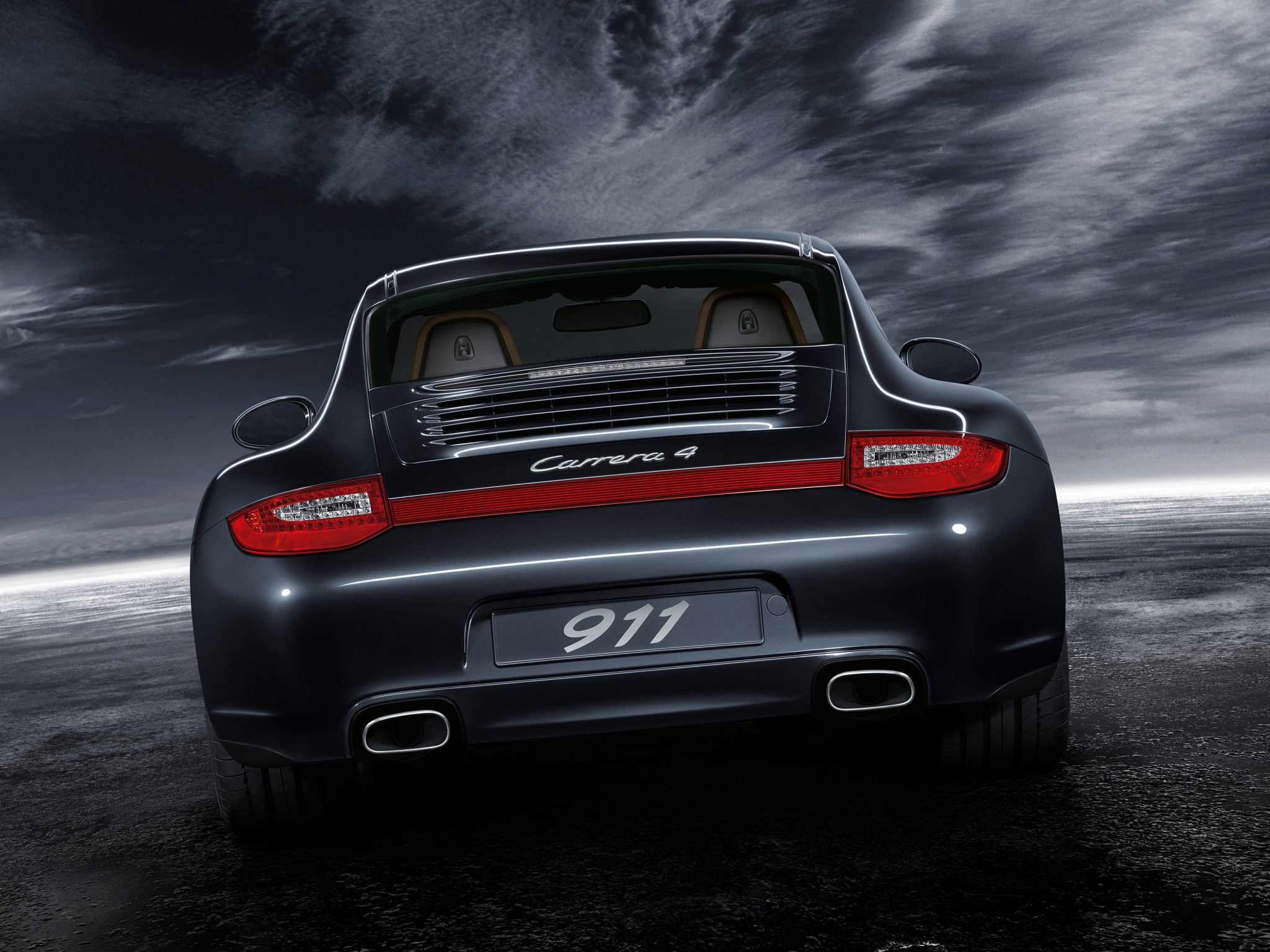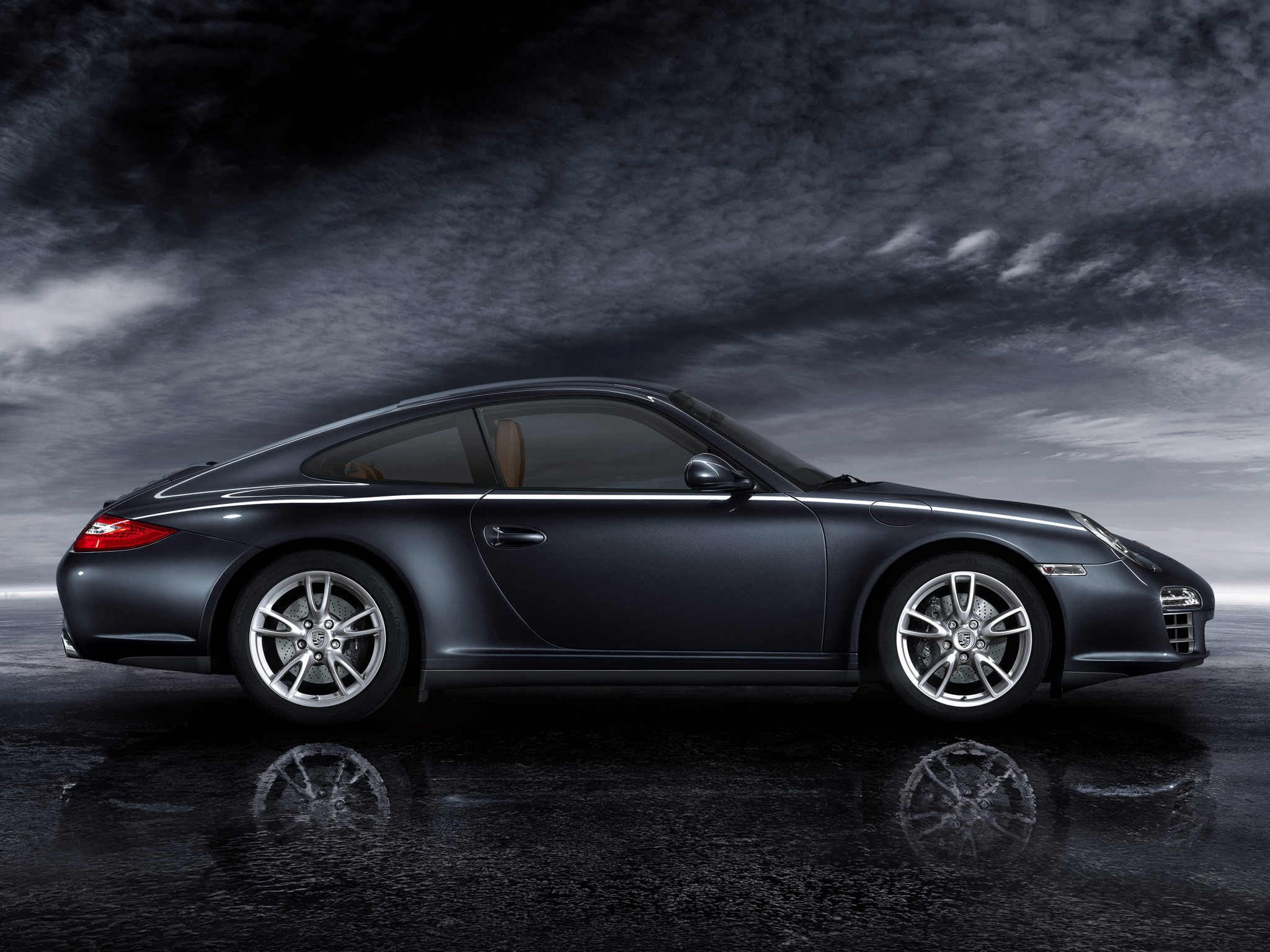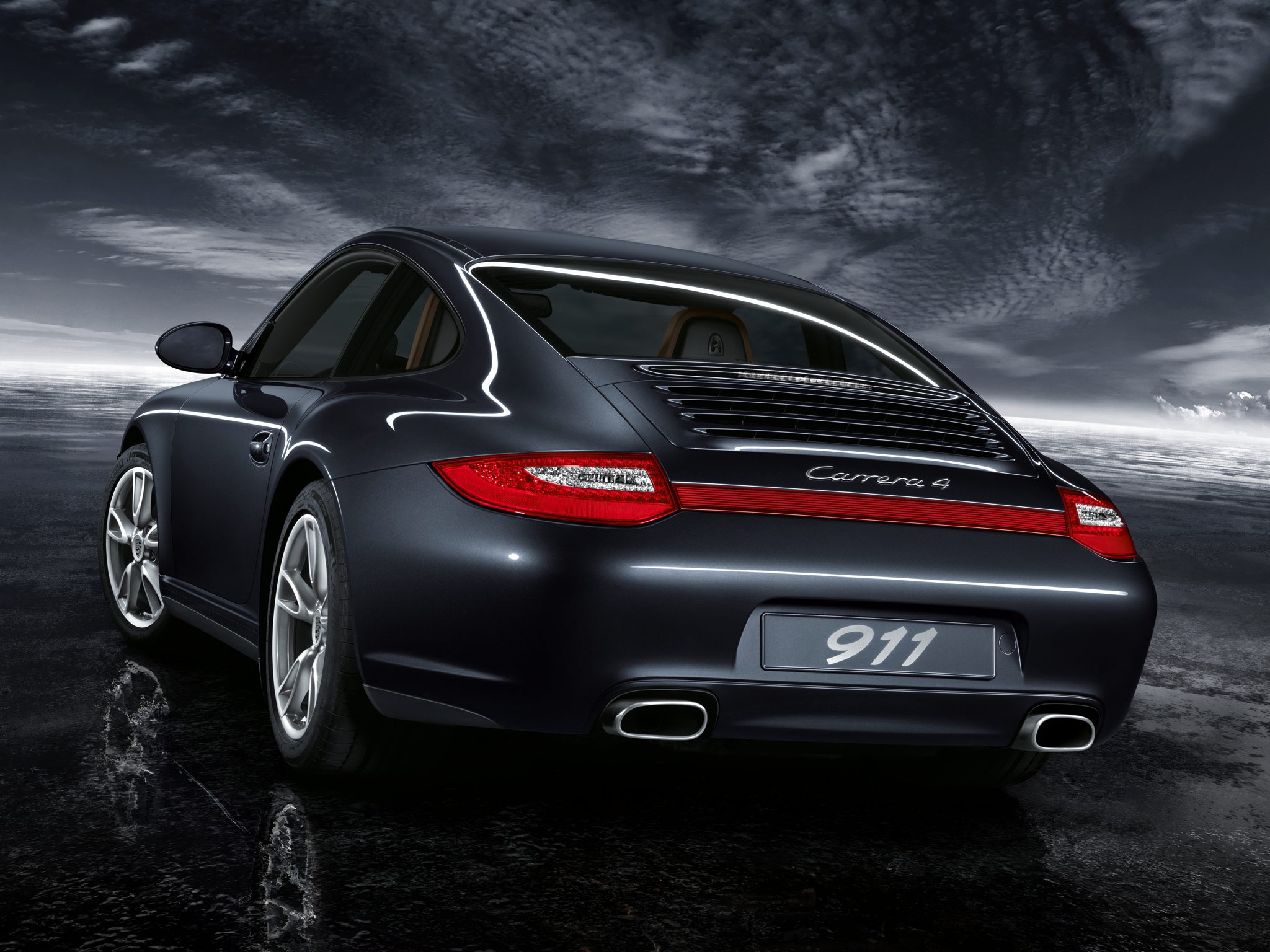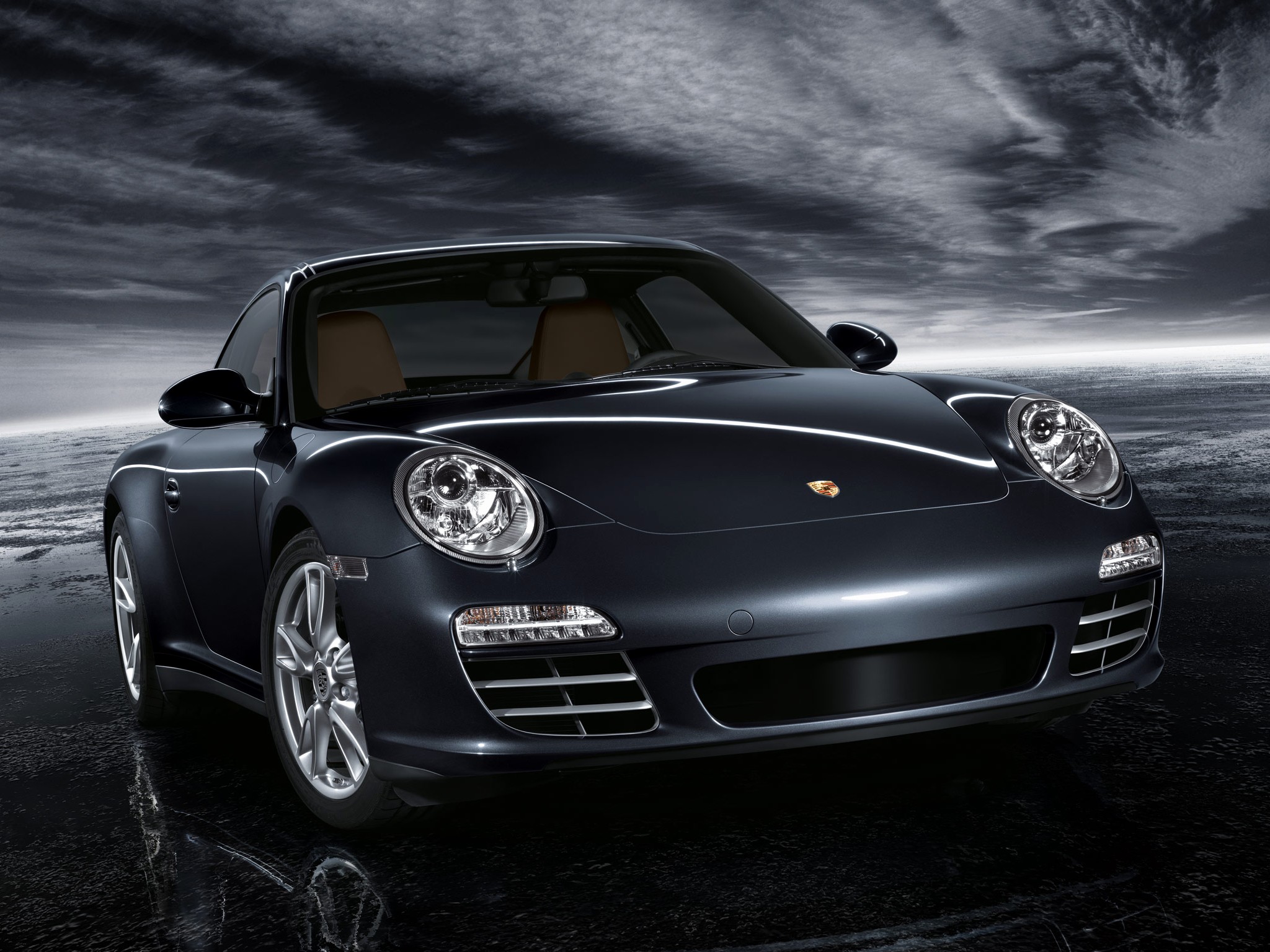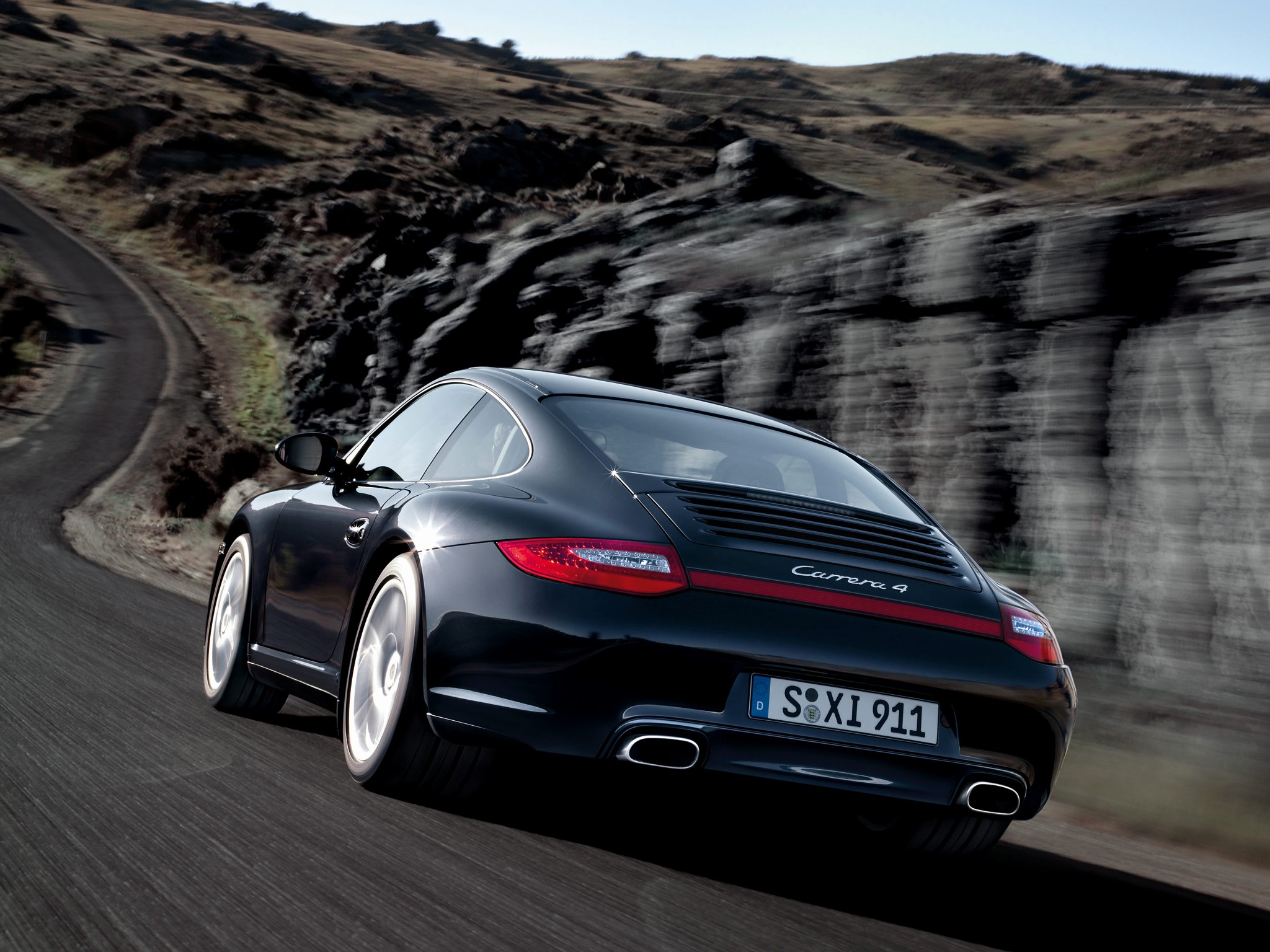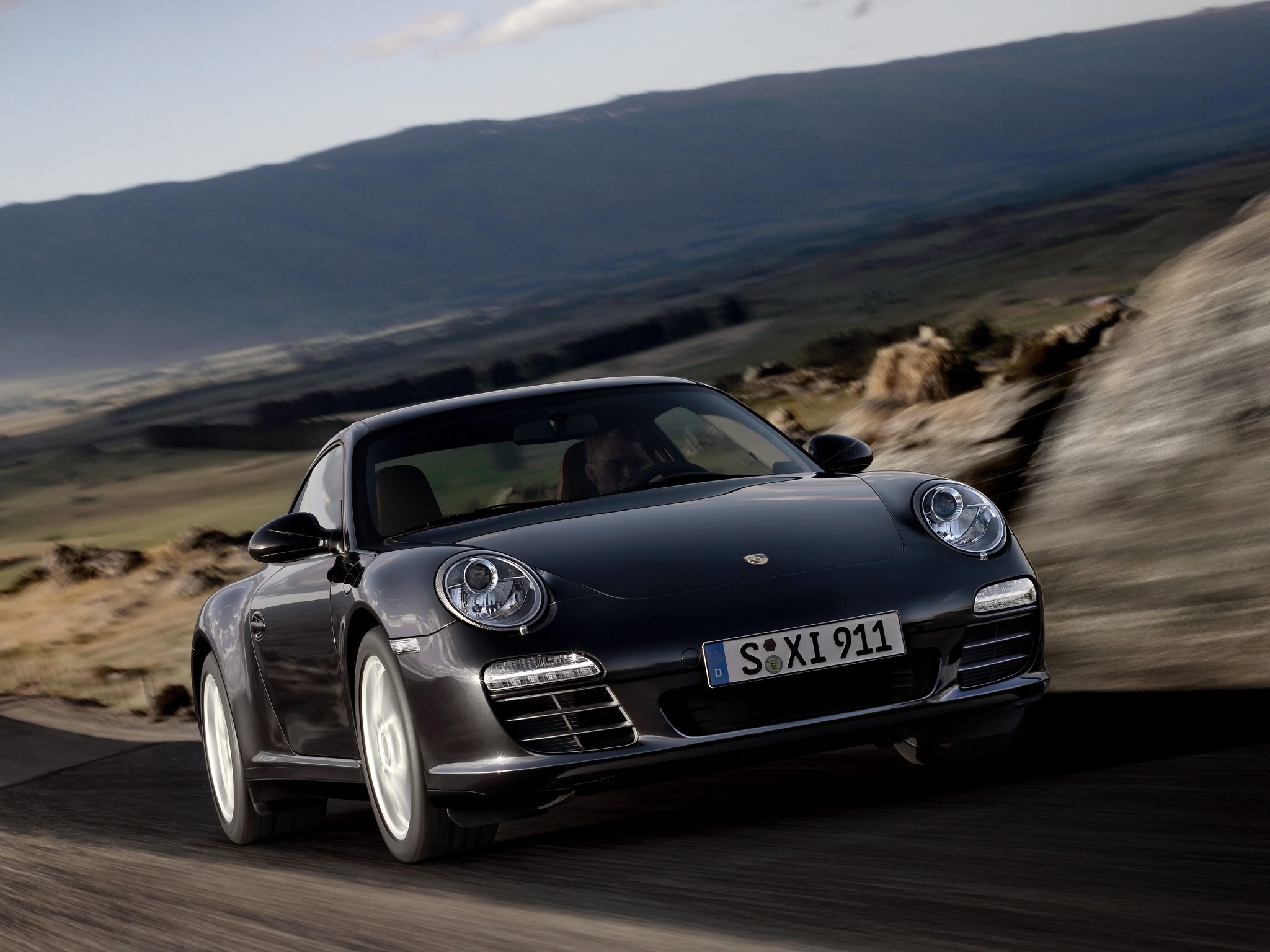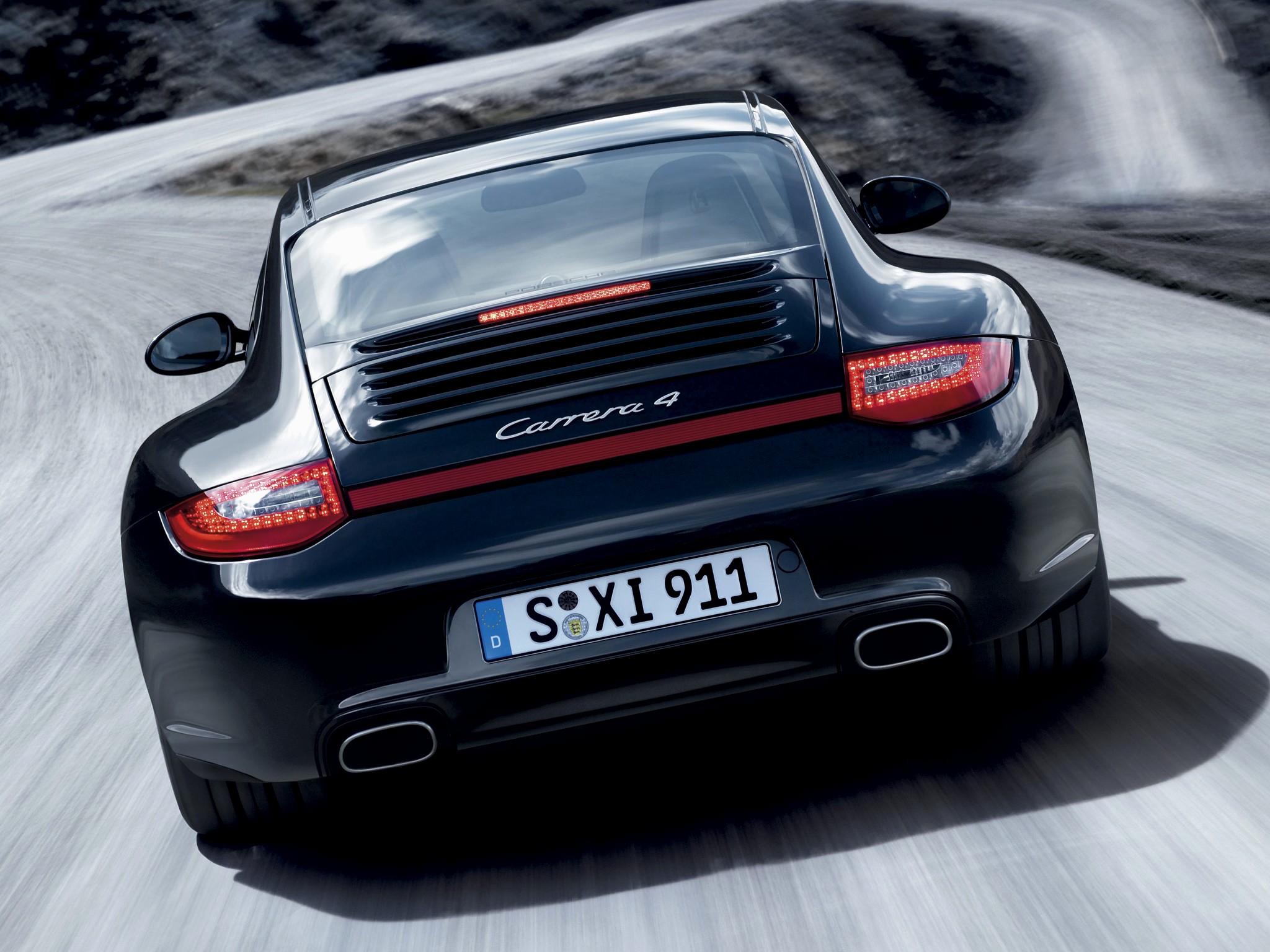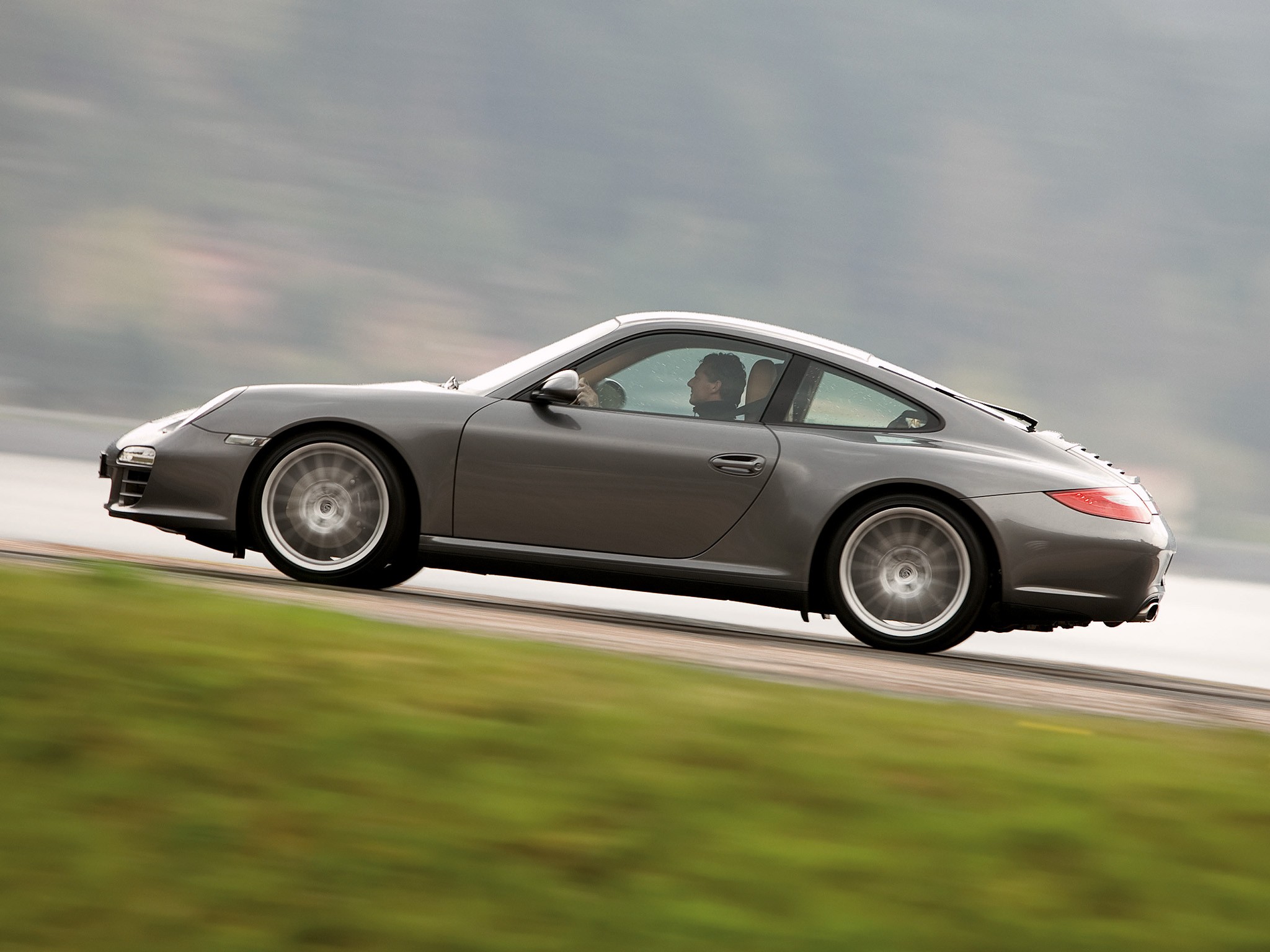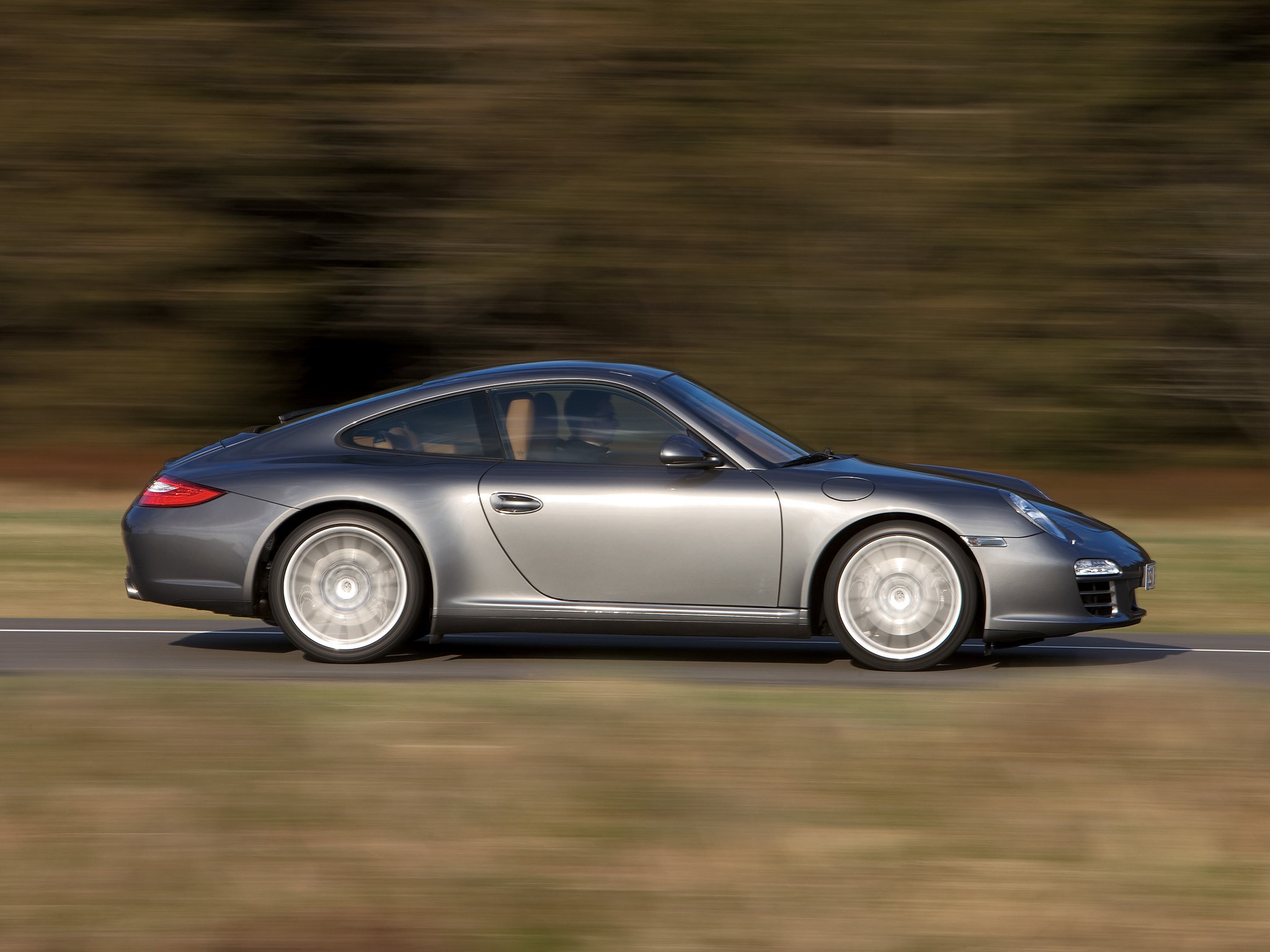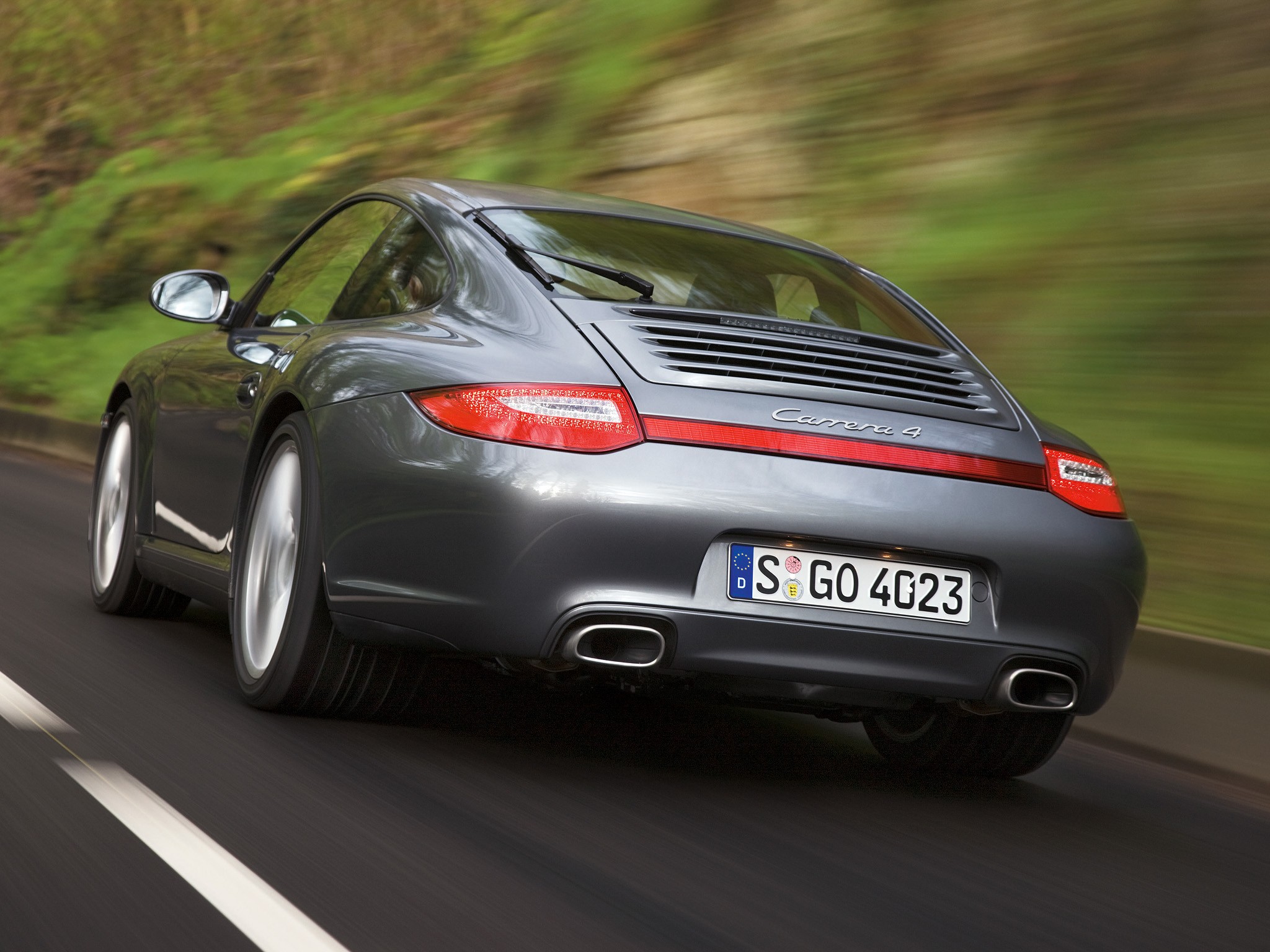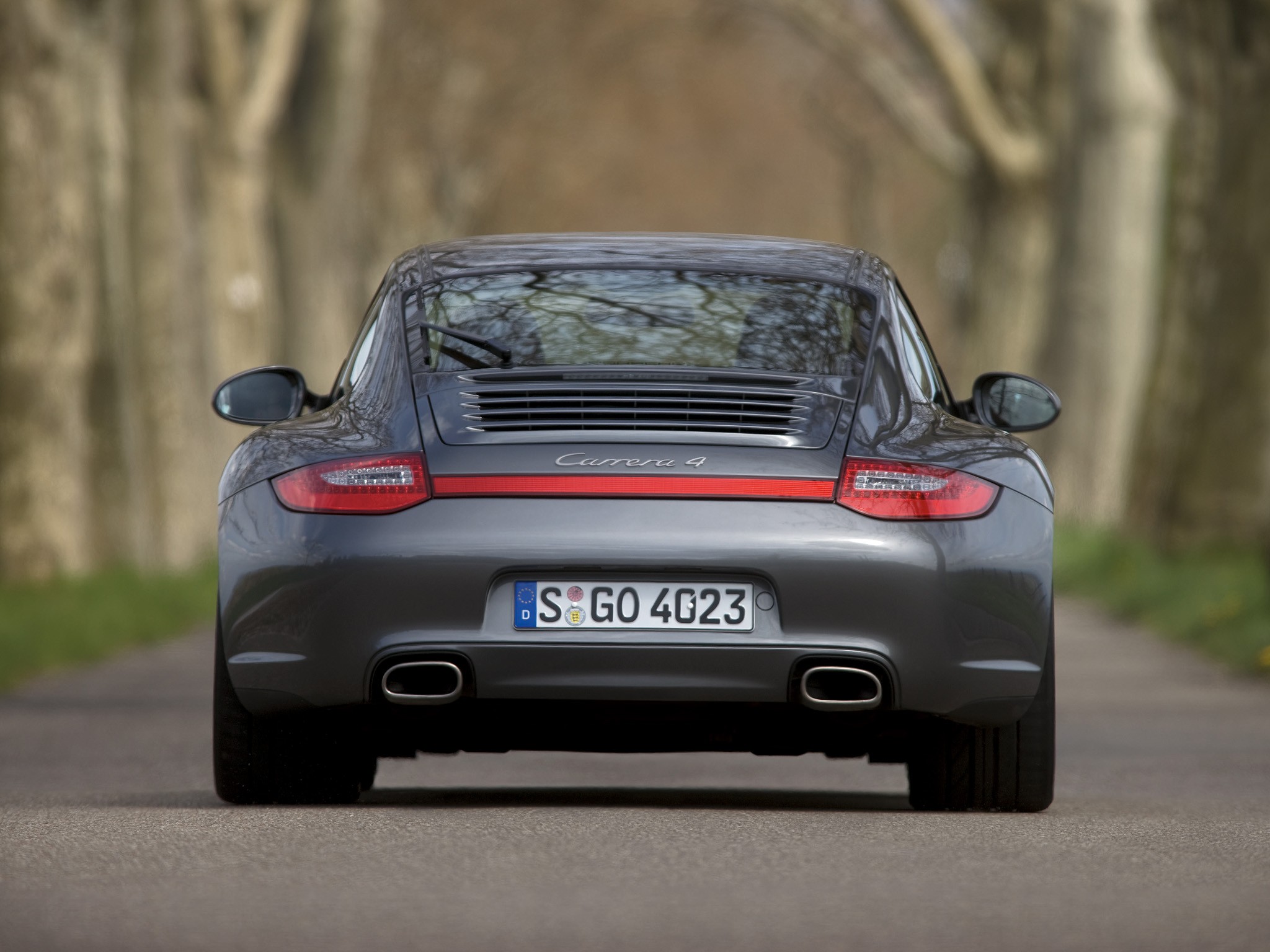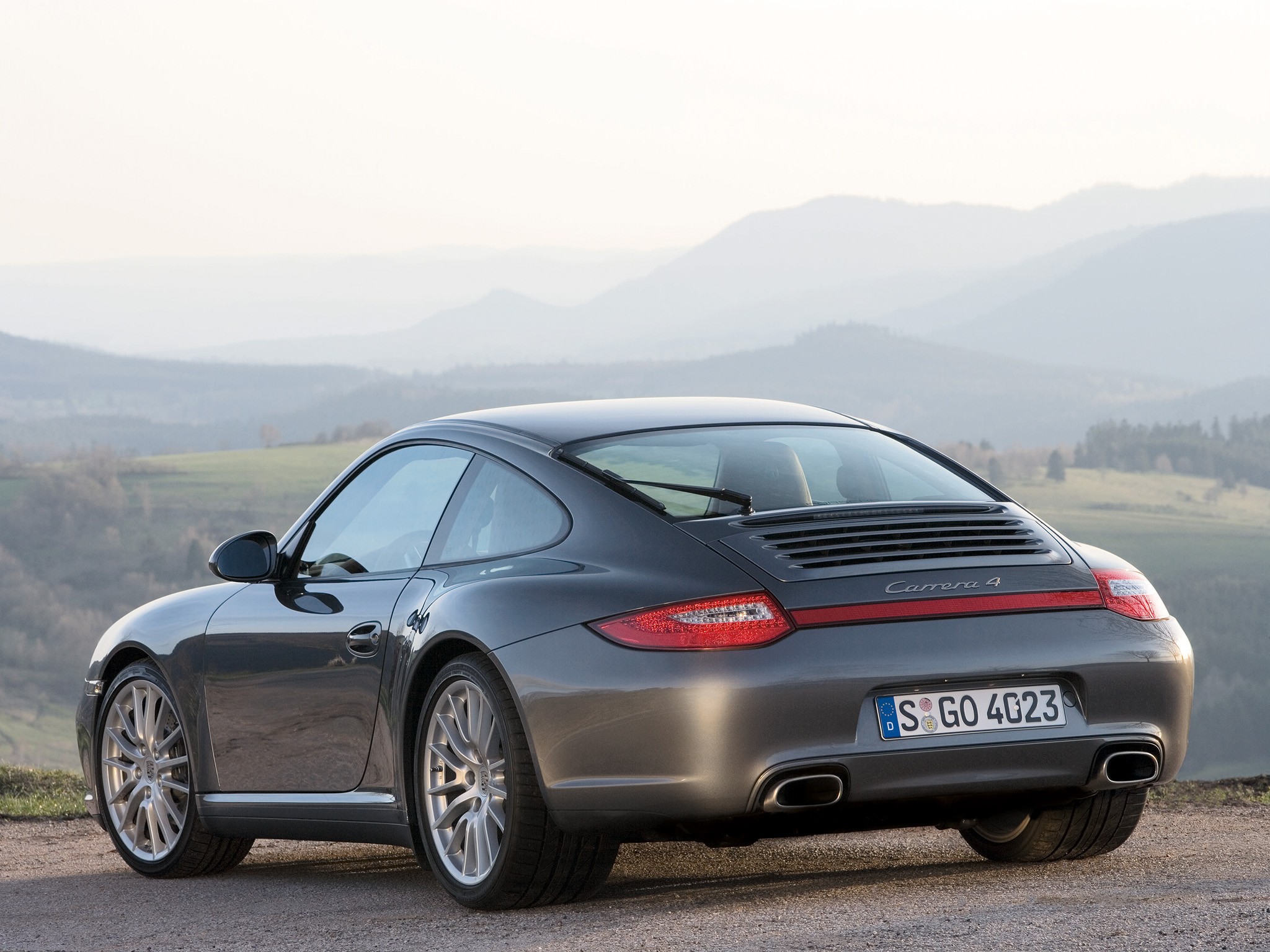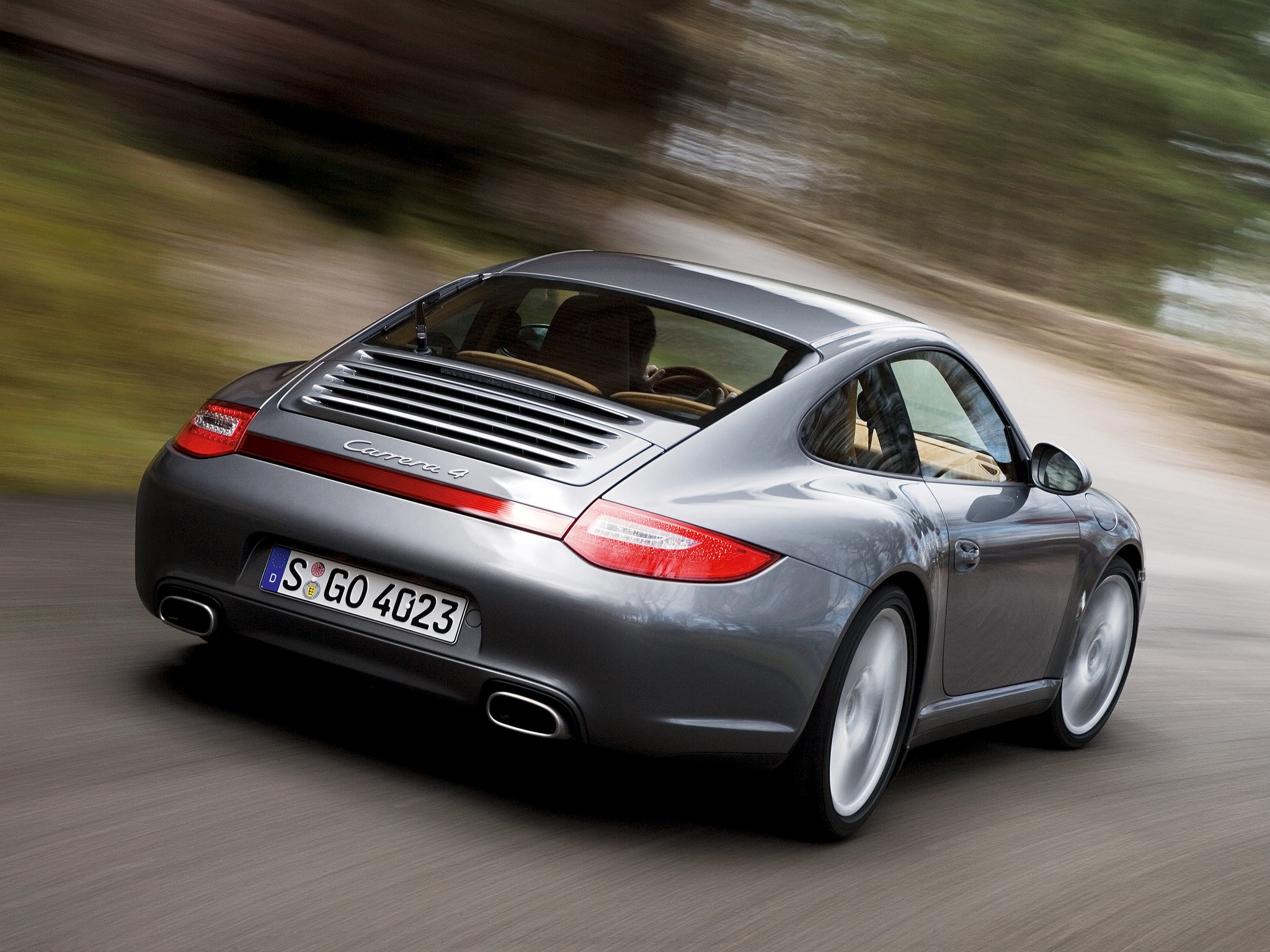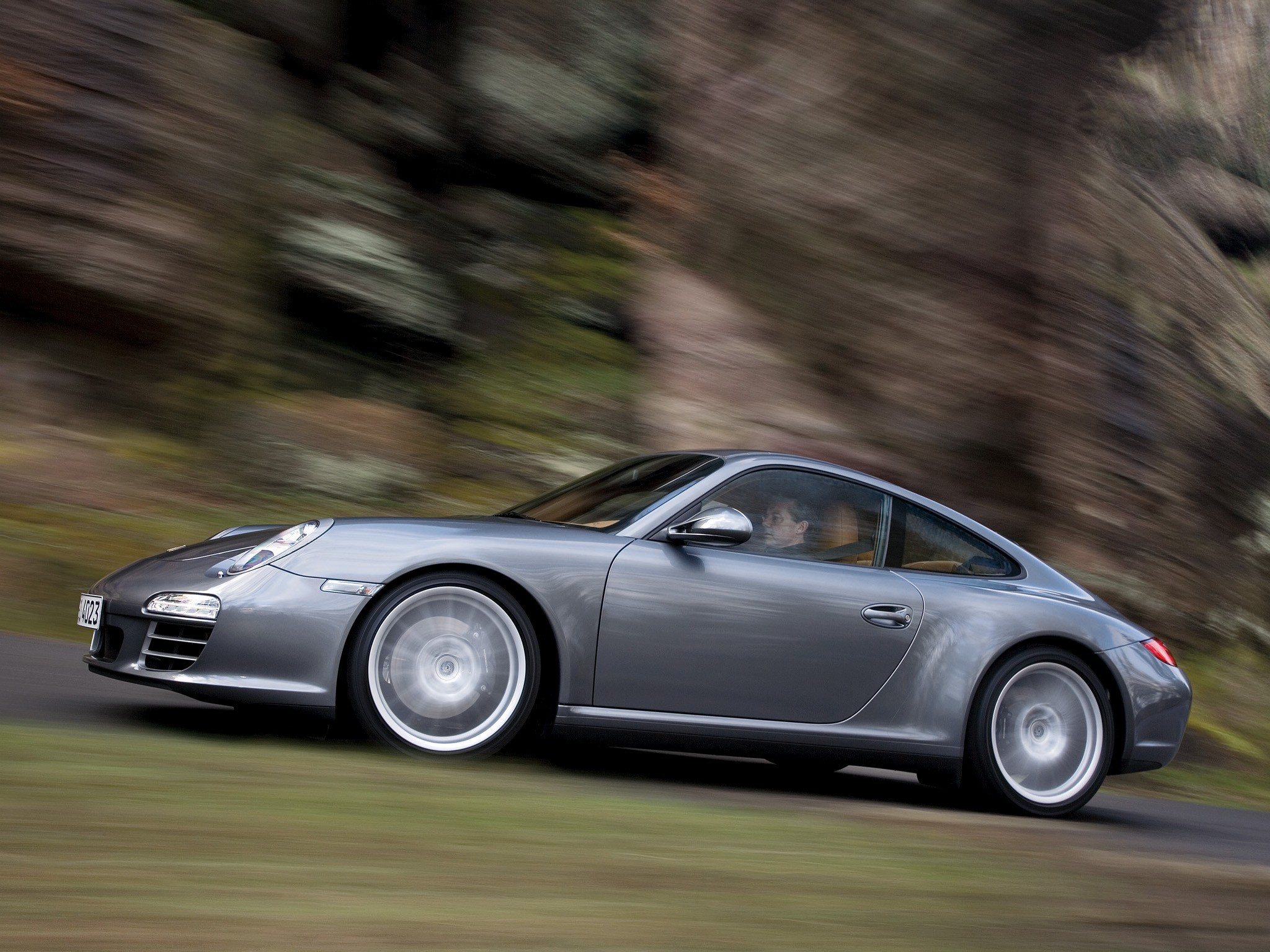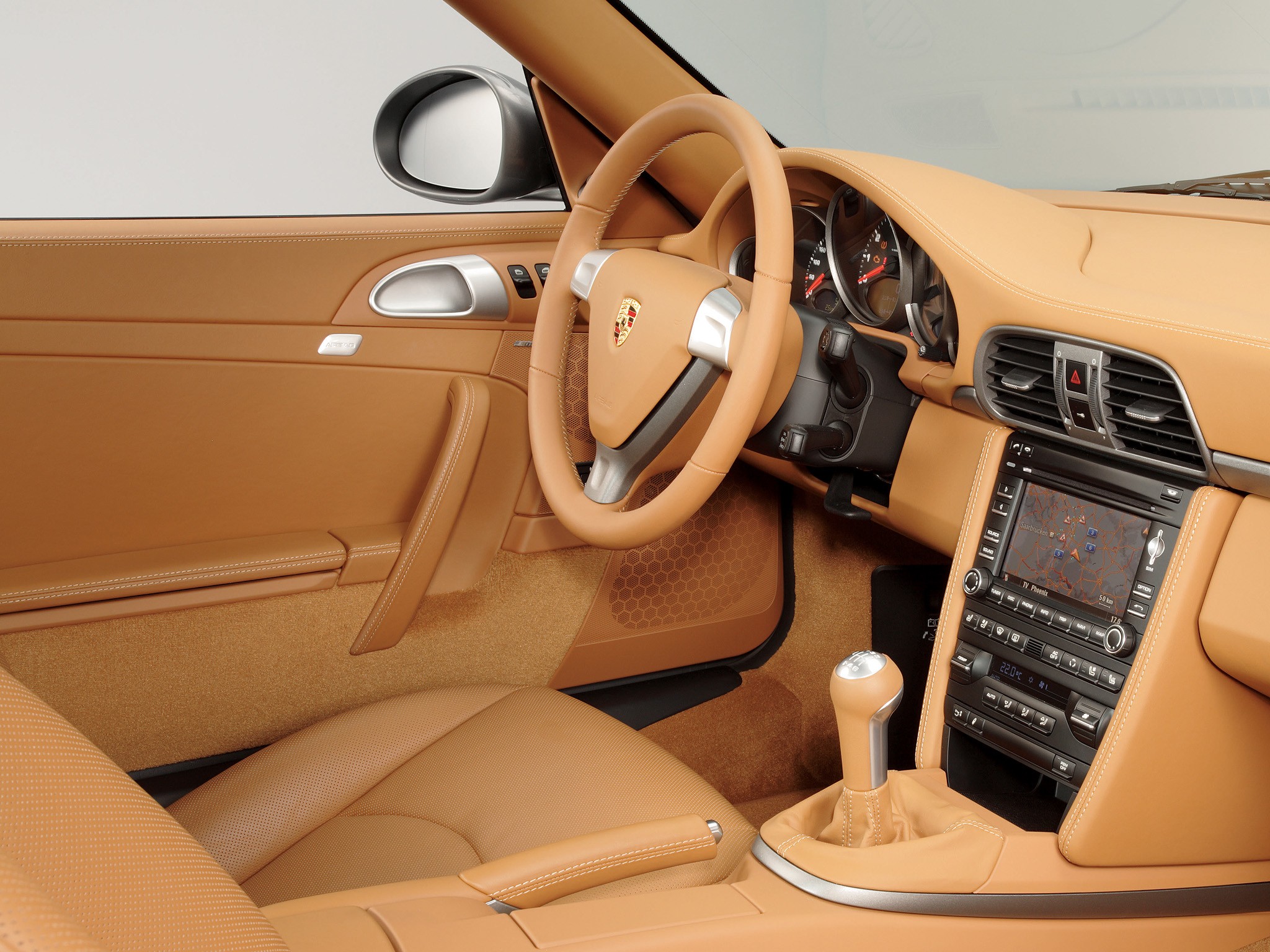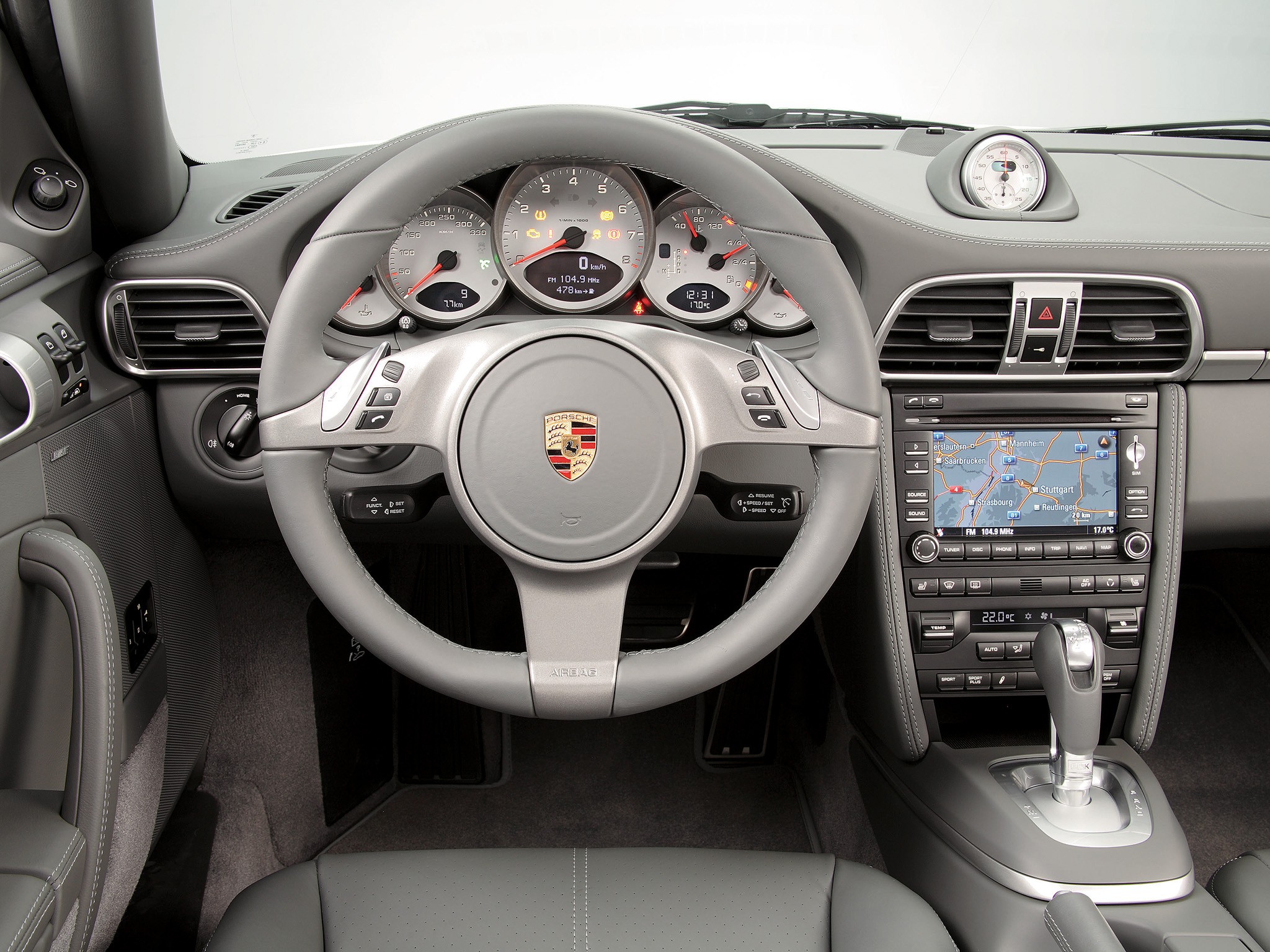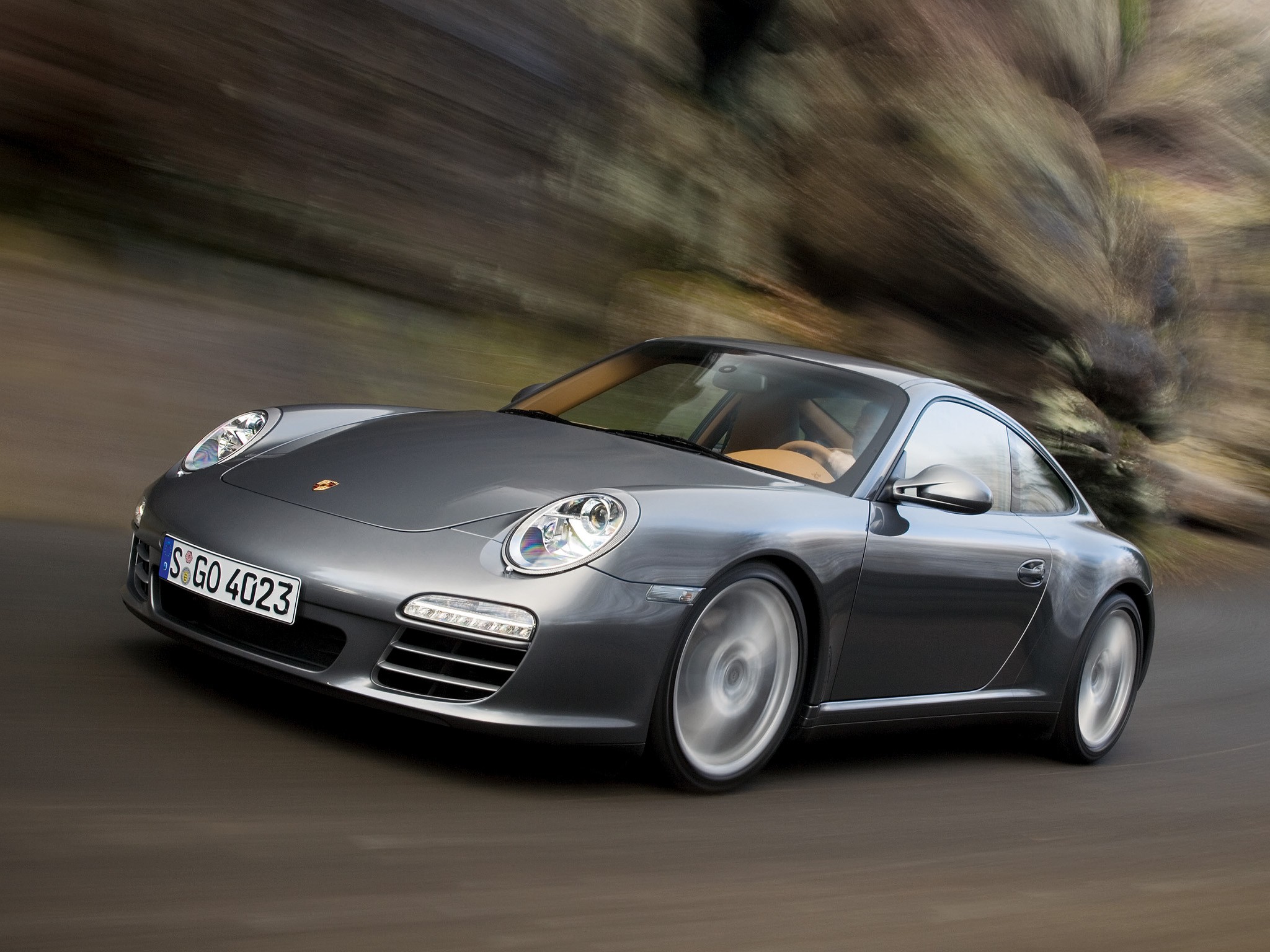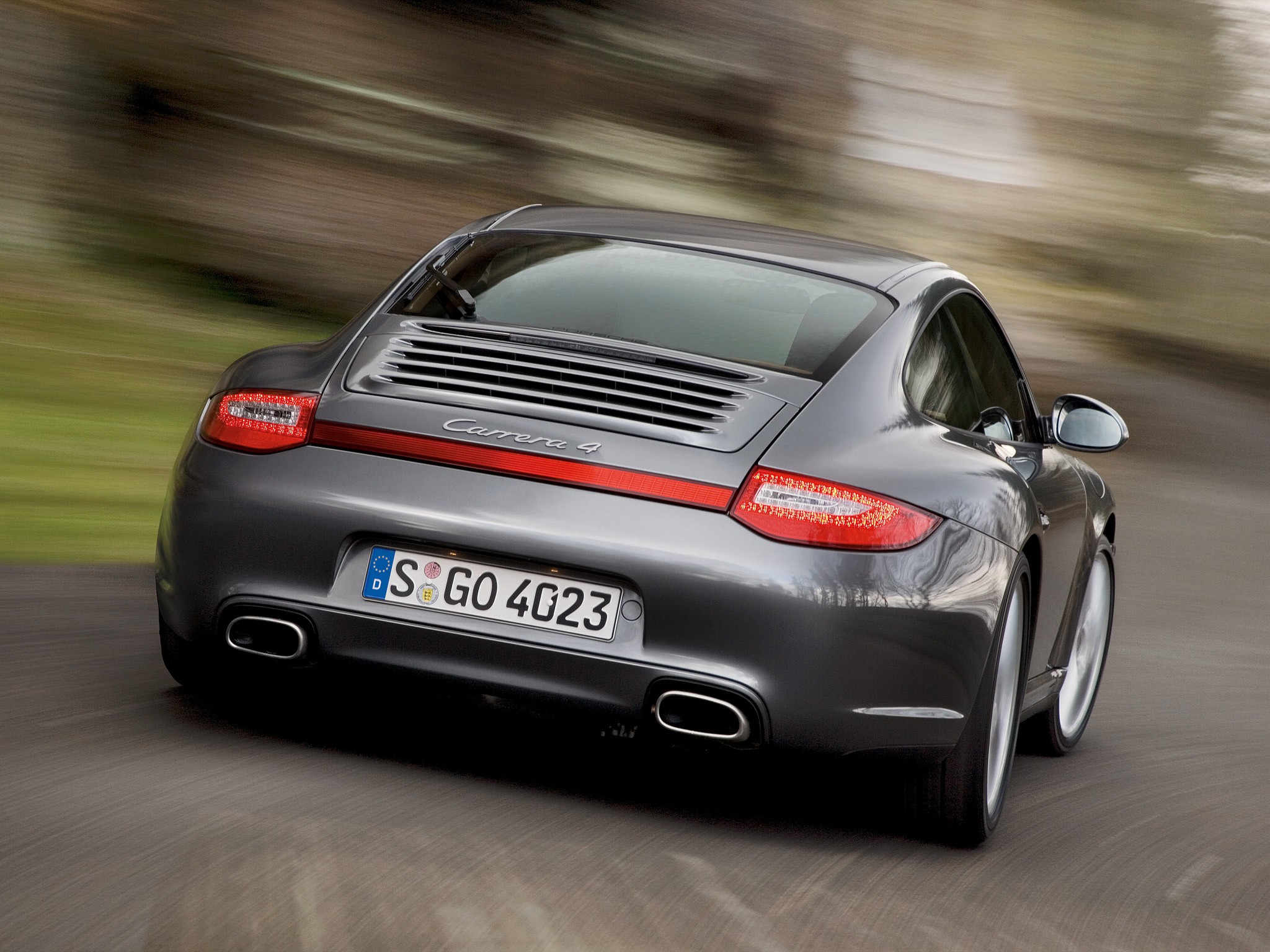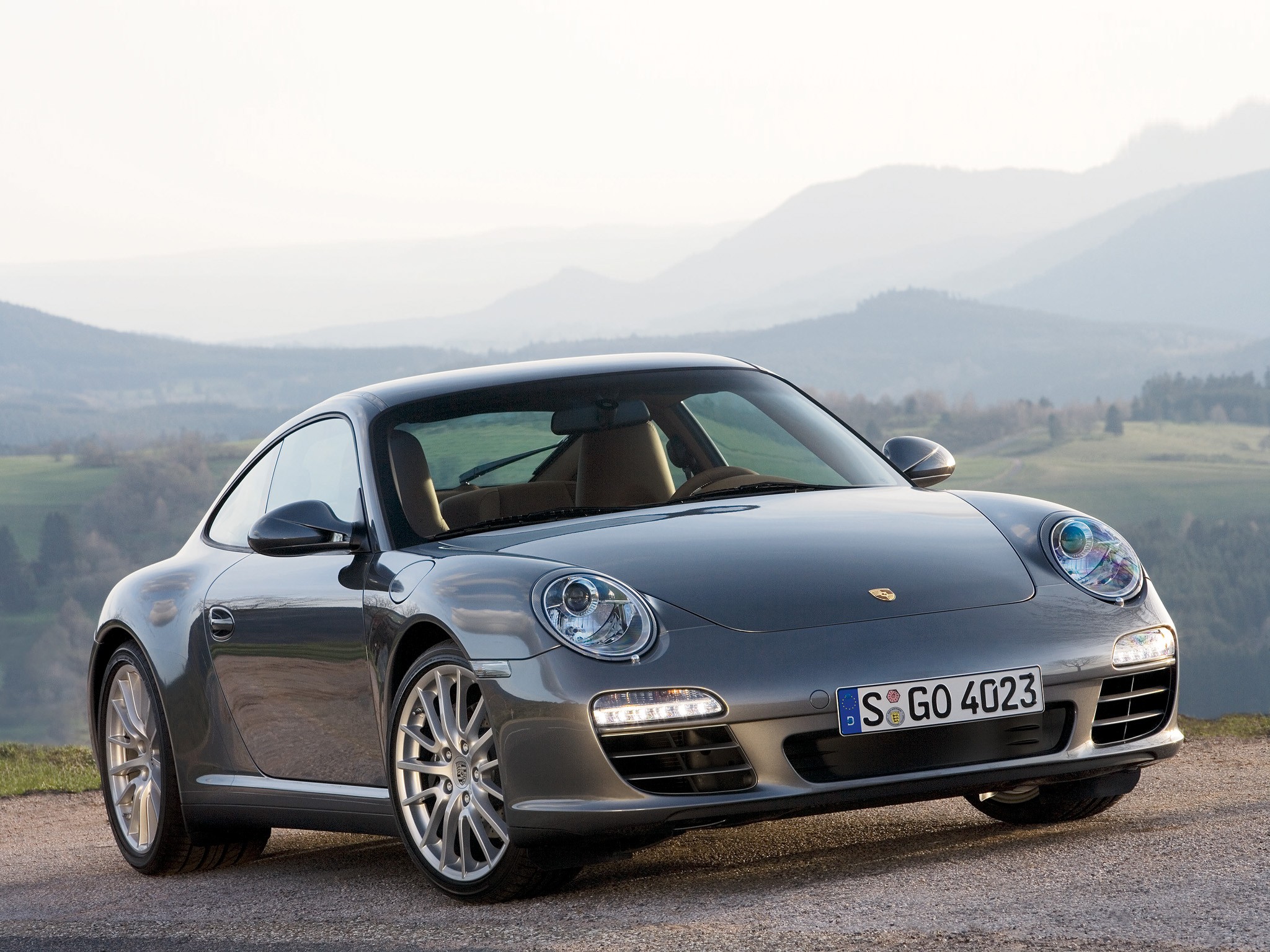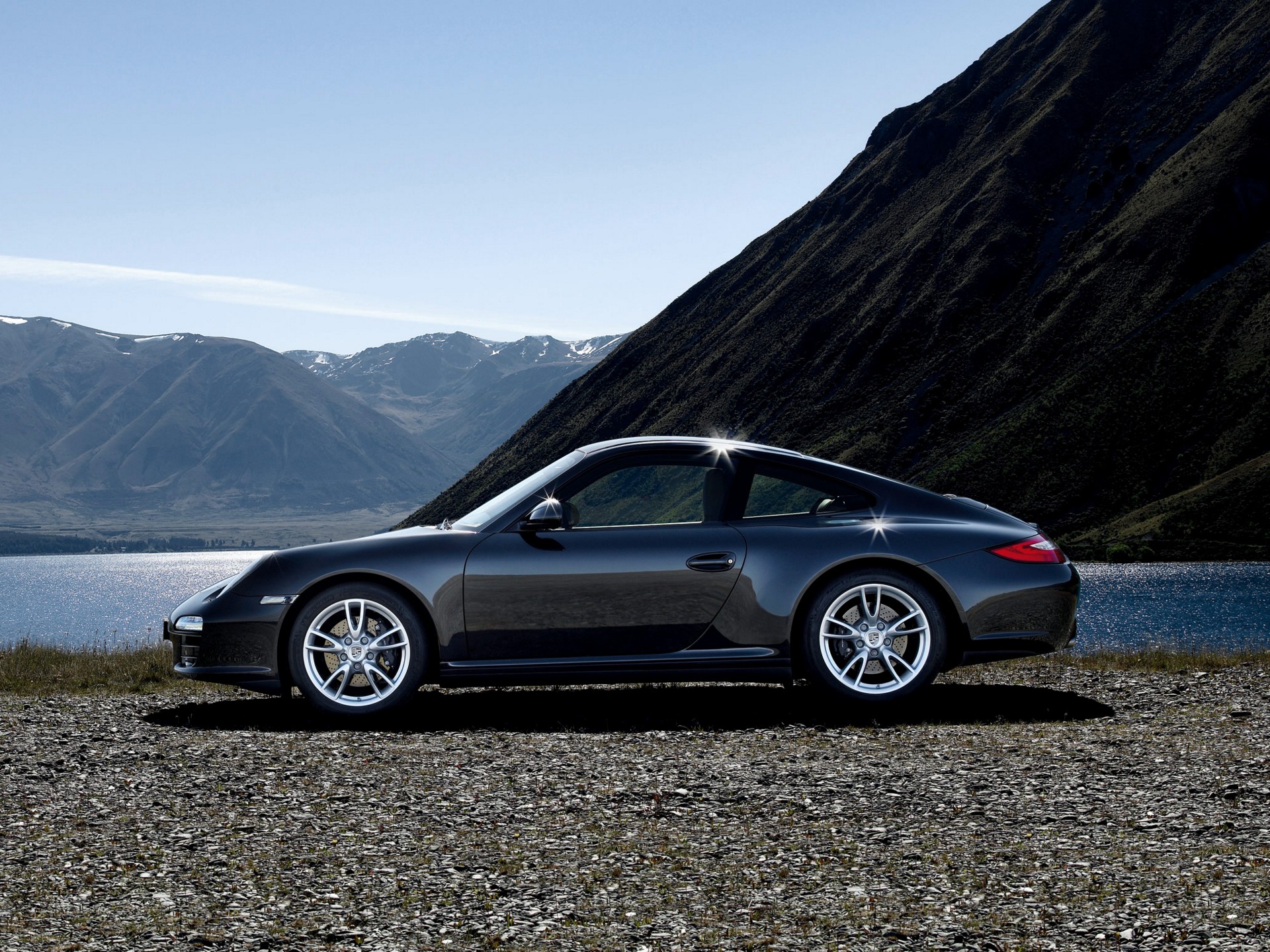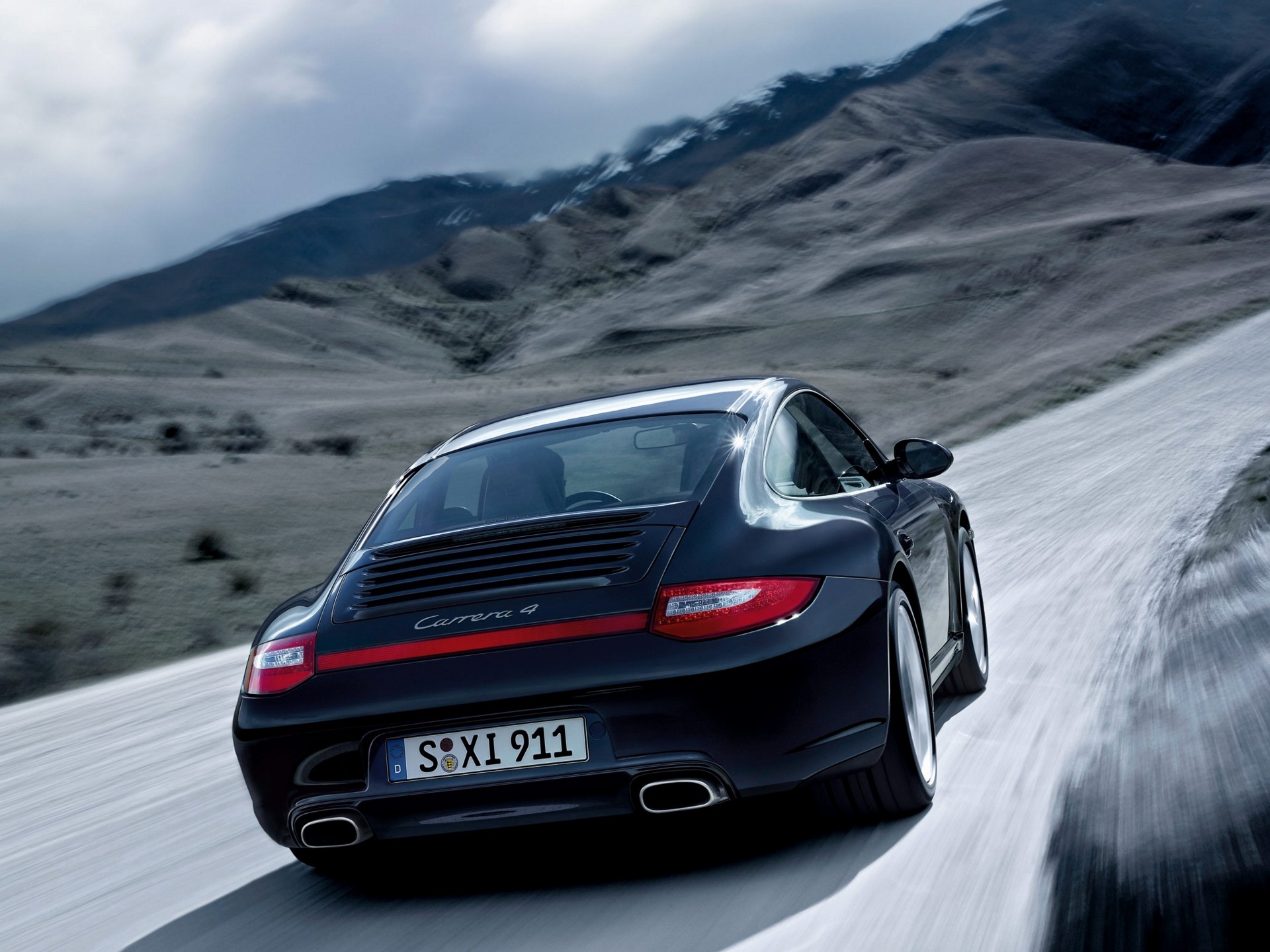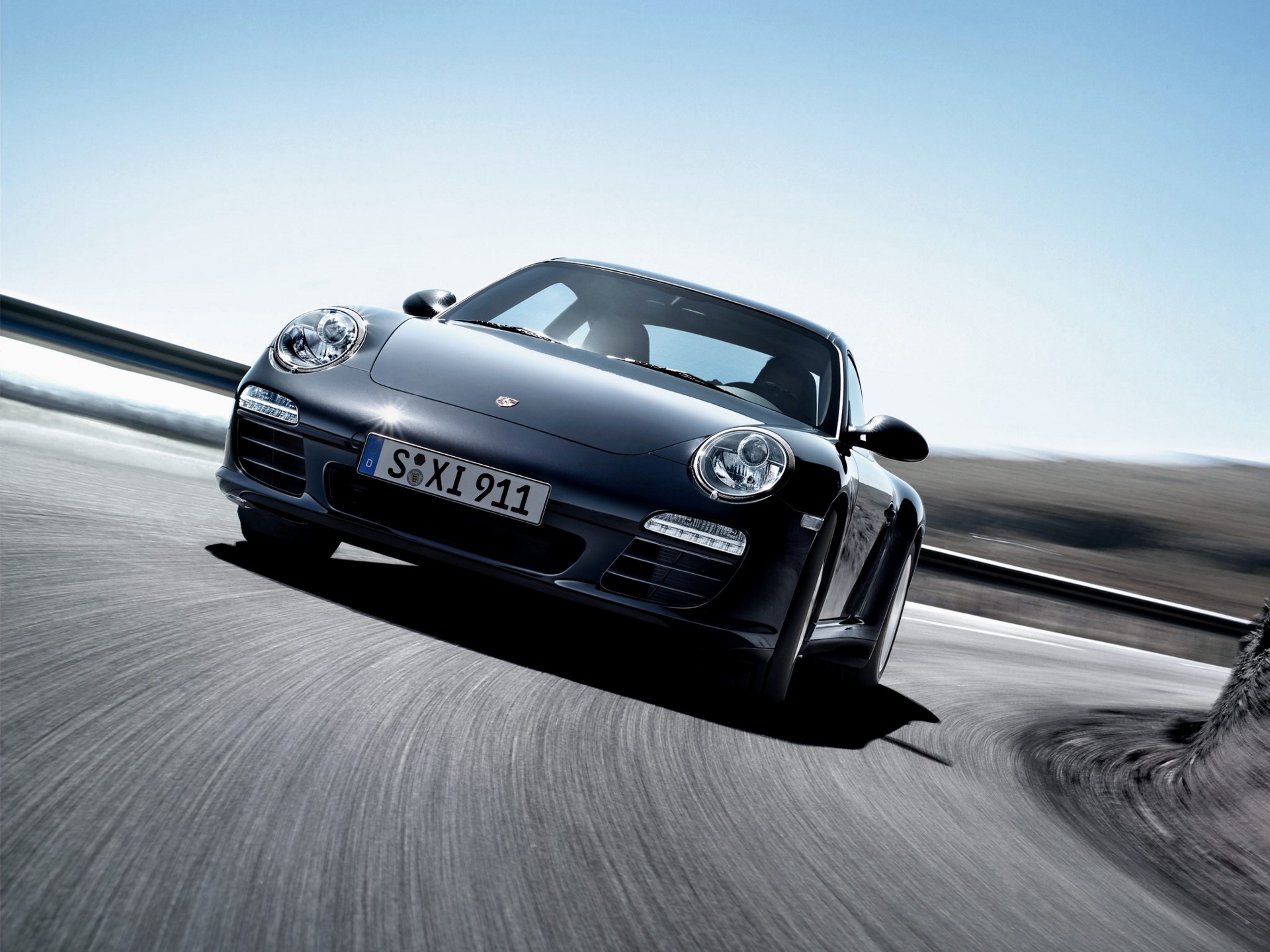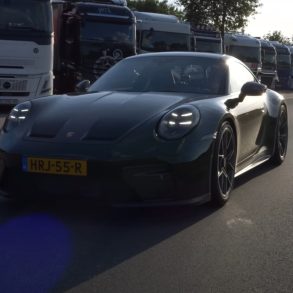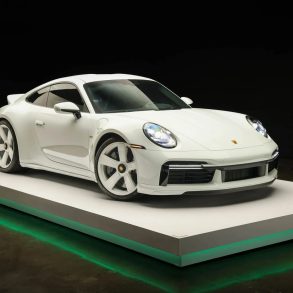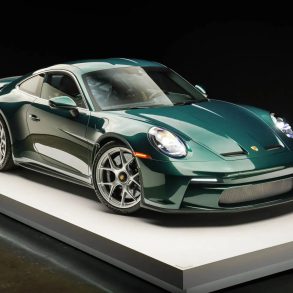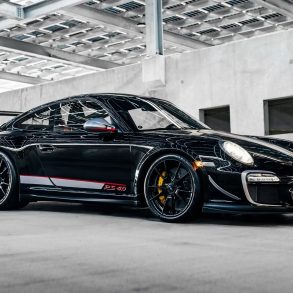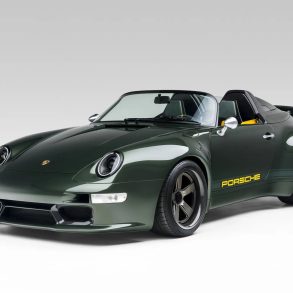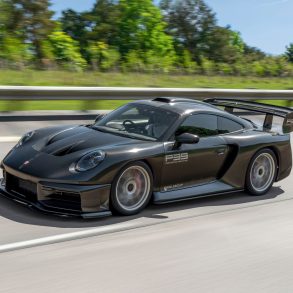(2009 – 2012) Porsche 911 Carrera 4 (997.2) – Ultimate Guide
The 997 received a mid-cycle refresh in 2008 for the 2009 model year. The updated model range was unveiled at the Paris Auto Show in September 2008. The updated Porsche 911 (called 997 Gen II internally at Porsche and 997.2 informally by enthusiasts) included new engines, now with direct fuel injection and a design refresh, as well a totally new PDK dual clutch transmission.
Most importantly, the refreshed Carrera 4 and 4S lose the old multi-plate, viscous all-wheel-drive system in favor of the electronically controlled system from the 911 Turbo. The old system could send between 5 and 40 percent of engine torque to the front wheels once it had detected wheelspin. The new electronic system can anticipate traction losses and shift up to 100 percent of engine torque fore or aft. Porsche says the new AWD system reacts faster to traction changes, and doesn’t make the Carrera 4 significantly heavier.
The all-wheel-drive models receive many of the same updates as their rear-drive siblings. For 2009, the base Carrera’s 3.6-liter flat-six engine is tuned to produce 345 horsepower, an increase of 20 horses, and the 3.8-liter unit in the Carrera S jumps from 355 to 385 hp. Both engines are now direct-injection, and either can be coupled to a six-speed manual transmission or Porsche’s PDK seven-speed, double-clutch gearbox.
Like the two-wheel-drive models, the Carrera 4 and Carrera 4S receive abundant visual changes, as well. The cars sport new LED daytime running lights, LED taillights, and a touch-screen infotainment system. The latest Porsche Communication Management system, PCM 3.0 includes a new touchscreen feature, is standard on all 997.2 911s. Along with this upgraded system, options such as a hard disk drive navigation system, XM radio with XM NavTraffic capability, Bluetooth connectivity, iPOD port, USB port, and aux jack will be available. It is a major upgrade.
On the outside, the first difference was on the front bumper, where larger air-intakes were sculptured. The headlights were fitted with bi-xenon lamps while the running lights and taillights were fitted with LEDs as standard. The door mirrors were slightly redesigned. A new set of 18” light-alloy wheels was introduced for the Carrera 4. As usual, both versions S and 4S featured wider rear fenders.
Inside the car, on the center console, Porsche installed a new infotainment unit that featured a 6.5” touch-screen display. It featured an optional hard-drive navigation system and Bluetooth connectivity. An option for ventilated seats was added to the list.
Pictures
Press Release
The all-wheel-drive, brawny Porsche 911 Carrera 4 Coupe and its higher-performance variant, Carrera 4S Coupe offer the skilled enthusiast driver exhilarating dimensions of dynamic driving enjoyment, even in inclement weather.
Both the Porsche 911 Carrera 4 and Carrera 4S boast a unique body over their all-wheel-drive powertrains. The broad-body design is more than an aesthetic statement; it’s a function of the flared wheel arches that are needed to accommodate the Coupe’s wide track, large wheels, and tires.
What’s New for 2009
Since their introduction, the Porsche 911 Carrera 4 and 911 Carrera 4S have received continuous refinement. That constant improvement takes a quantum leap for the 2009 model year. Both cars receive dazzling new technologies for their core components: engines, transmissions and all-wheel drive systems.
The new, more potent and more fuel efficient engines boast direct fuel injection systems among other enhancements for improved performance and better fuel economy.
In lieu of the optional Tiptronic S transmission, Porsche 911 Carrera 4 and Carrera 4S owners may now specify the driver-shiftable Porsche Doppelkupplungsgetriebe, or PDK. This ground-breaking seven-speed double-clutch automatic transmission is lighter, more efficient, and quickershifting than the previous Tiptronic S.
For 2009, engine power is distributed to all four wheels via the same electronically controlled Porsche Traction Management system found previously only on the Porsche 911 Turbo. The electronic controls respond to driving conditions even more instantaneously than the previously used hydraulically activated all-wheel drive system.
Commensurate with the increased performance potential, Porsche engineers have increased the Porsche 911 Carrera 4 and Carrera 4S Coupes’ braking ability. Night visibility is also enhanced as both cars come standard with BI-XENON headlights and L.E.D. driving lights as well as brake- and taillights.
Driver and passenger comfort and convenience have also been enhanced for 2009 with the availability of ventilated front seats and through the redesign of the Porsche Communication Module which boasts a larger screen, simplified operation, Bluetooth connectivity and the ability to play music from such external sources as an iPod and MP3 players.
More Power from Less Fuel
Both the Porsche 911 Carrera 4 Coupe and 911 Carrera 4S Coupe receive new engines for 2009. The engines both boast direct fuel injection, new two-piece crankcases and revised intake and exhaust systems along with Porsche VarioCam Plus intake-valve timing and lift system.
The results are felt and appreciated immediately by the Porsche 911 Carrera 4 Coupe driver. Thanks to a 6.2 percent increase in horsepower, the 3.6-liter engine goes from 325 to 345 hp. Similarly, there’s a 5.5 percent gain in torque, from 273 to 288 lb.-ft. Thanks to these improvements, a manual gearbox-equipped 2009 911 Carrera 4 Coupe accelerates from 0 to 60 mph (96 km/h) in 4.8 seconds.
Even more impressive, when the car is equipped with the new PDK Porsche double-clutch in place of MY 2008 Tiptronic S, the Porsche 911 Carrera 4 accelerates from 0 to 60 mph in 4.6 seconds, a full half second more quickly than its predecessor.
The 3.8-liter engine in the still-more potent 911 Carrera 4S Coupe exhibits equally awesome results, delighting its driver by sprinting to 60 mph in only 4.5 seconds when equipped with a manual gearbox and making that run in a mere 4.3 seconds with the PDK. This hedonistic acceleration is compliments of the new 3.8-liter engine’s gain of 30 hp, from 355 to 385 hp, or 8.4 percent, and a 5 percent improvement in torque, from 295 lb.-ft. to 310.
Even with the substantial increases in horsepower and torque over the predecessor models, neither the 2009 3.6-liter Porsche 911 Carrera 4 nor the 3.8-liter Carrera 4S carries the stigma of a gas-guzzler penalty. And both engines earn their respective cars federal Low-Emissions Vehicle, category two (LEV-II) certification.
Two Clutches, No Clutch Pedal
To take full advantage of the newly designed engines, Porsche is offering drivers a transmission that delivers quicker acceleration than is possible with the standard manual gearbox while maximizing fuel efficiency. The new PDK (from the German Porsche- Doppelkupplungsgetriebe), or Porsche double-clutch, replaces the Tiptronic S as the optional gearbox in both the Porsche 911 Carrera 4 Coupe and 911 Carrera 4S Coupe.
Porsche was the first automaker to successfully use this transmission technology back in the 1980s when the transmission was developed for the mighty Porsche 962 Group C race car. The Porsche 911 Carrera 4 Coupe or Carrera 4S Coupe driver can allow the seven-speed PDK to shift up and down automatically, or he may opt to shift personally via steering-wheel mounted paddles or the console-mounted lever, the same as with the Tiptronic S.
Essentially, the PDK is a conventional, seven-speed manual gearbox with two electrohydraulically controlled, oil-bathed multiplate clutch packs. One clutch pack controls the oddnumbered gears and Reverse, the other the even-numbered gears. As one clutch pack engages the appropriate gear based on engine speed, load, and vehicle speed, the other clutch simultaneously disengages the previous gear. The results are seamless, instantaneous up- and downshifts, performed more quickly than could be done by even a skilled test driver.
Gains Through Loss
The newly revamped engines, both 3.6-liter and 3.8-liter, each weighs about 6 kg, or 13.2 pounds, less than its predecessor. The new engines offer increased structural rigidity for a quieter, more comfortable driving experience as well as improved durability. The innovative PDK, despite offering more gear ratios than the Tiptronic S is about 10 kg, or 22 pounds, lighter than last year’s Tiptronic.
Through such careful weight management, Porsche engineers were able to keep the 2009 Porsche 911 Carrera 4 Coupe within 50 pounds (23 kg) of 2008 car, while the 911 Carrera 4S Coupe weighs only 11 pounds (5 kg) more than its predecessor, despite the new cars’ added equipment and features.
All-Weather Maximum Performance
Mechanically, the Porsche 911 Carrera 4 and Carrera 4S Coupes are defined by their allwheel drive capabilities. For 2009, these cars benefit from the same electronically controlled Porsche Traction Management (PTM) found under the awesome Porsche 911 Turbo. PTM can vary the torque split infinitely and absolutely between front and rear wheels as needed for optimum traction. However, since most purists feel-and Porsche’s engineers staunchly believe-that rear-drive is critical for optimum sporty driving, PTM directs two-thirds of the engine’s torque to the rear wheels under normal driving conditions.
When the system determines it is needed, PTM diverts engine power and torque to the front axle in millisecond cycles. Particularly at very high speeds, all the driver feels is the car’s significant stability.
Bigger, Grippier Brakes
Among the added features are even more potent brakes than before. Porsche engineers firmly believe that a car’s deceleration ability must always out-perform its ability to accelerate. Commensurate with the gains in engine performance, the 2009 Porsche 911 Carrera 4 and Carrera 4S Coupes receive added braking capability. All four brake rotors on both cars are cross-drilled, inner vented and now 12.99 inches (330 mm) in diameter.
In addition, the monobloc, four-piston calipers are now the same as those used on the 911 Turbo. Critical refinements have been made to the airflow around the wheels to increase brake cooling all around as well.
Distinct Yet Readily Familiar
As dramatic as are the changes in the Porsche 911 Carrera 4 and 4S Coupes’ drivetrains this year from last, is how elegantly subtle the exterior differences are. Knowing full well that Porsche owners prize the classic shape of the Porsche 911 Carrera 4 and 4S, and that wanton and radical redesigns simply for the sake of change undermine a marque’s value, Porsche’s designers and engineers allowed only minor refinements to the appearance of the model range for 2009.
When viewed head on, the most notable differences are the new, horizontal covers for the BIXENON headlights and the L.E.D. daytime running lights, which extend over the air inlets. Also noteworthy are those air vents which boast larger cooling openings. The keen-eyed observer will also note the absence of a center radiator on cars equipped with the PDK.
The side view reveals new, larger exterior mirrors with aerodynamic twin-arm mounts as well as new lightweight alloy wheels. The standard wheels on the Porsche 911 Carrera 4 Coupe are 18 inches in diameter, and the 911 Carrera 4S Coupe comes with 19 inch wheels.
In the rear, all the lighting elements, save the reversing lamp, are now light-emitting diodes, for improved luminosity, longer life and instantaneous response. Finally, in the back, the Porsche 911 Carrera 4 Coupe sports two single oval exhaust pipes while the 911 Carrera 4S Coupe shows dual round polished exhaust outlets.
The Porsche 911 Carrera 4 and Carrera 4S Coupes are visually distinct compared to their two-wheel drive siblings by their brawny stance and their muscular fenders. The all-wheel-drive versions of the Porsche 911 Carrera are 1.73 inch (44 mm) wider than their two-wheel-drive counterparts. Despite the extra width, the Porsche 911 Carrera 4 and Carrera 4S Coupes are stunningly aerodynamic. The Porsche 911 Carrera 4 has a coefficient of drag of only 0.30 and the Carrera 4S is even slipperier with a Cd of only 0.29, despite their larger tires.
More Sophisticated and Comfortable
Interior refinements include a revamped center console highlighted by a new Porsche Communication Management system (PCM) and the availability of ventilated front seats.
The latest iteration of the PCM boasts a 12 percent larger screen than before, 6.5 inches vs. 5.8. In addition, the PCM is now controlled via an easy-to-clean touchscreen which incorporates a simpler keyboard. The optional navigation module now has a 40 GB hard drive. Other available features with the newest PCM include an internal GSM mobile phone module with Bluetooth handsfree operation, as well the ability to connect with external music sources such as an iPod or USB memory sticks.
Interior comfort may be enhanced regardless of front seat selection thanks to optional seat ventilating fans, available in conjunction with heated seats. These circulate air through the seatback and cushion upholstery to expedite cooling, heating and/or drying the driver and passenger.
All-weather capabilities or not, the Porsche 911 Carrera 4 and Carrera 4S Coupes boast luxuriously appointed passenger cabins. Like all Porsche automobiles, the Coupes offer their occupants the protection of six airbags: dual frontal-impact airbags; as well as two seat-mounted, thorax-protecting, side-impact airbags; and two head-protecting, side-impact, curtain doormounted airbags.


